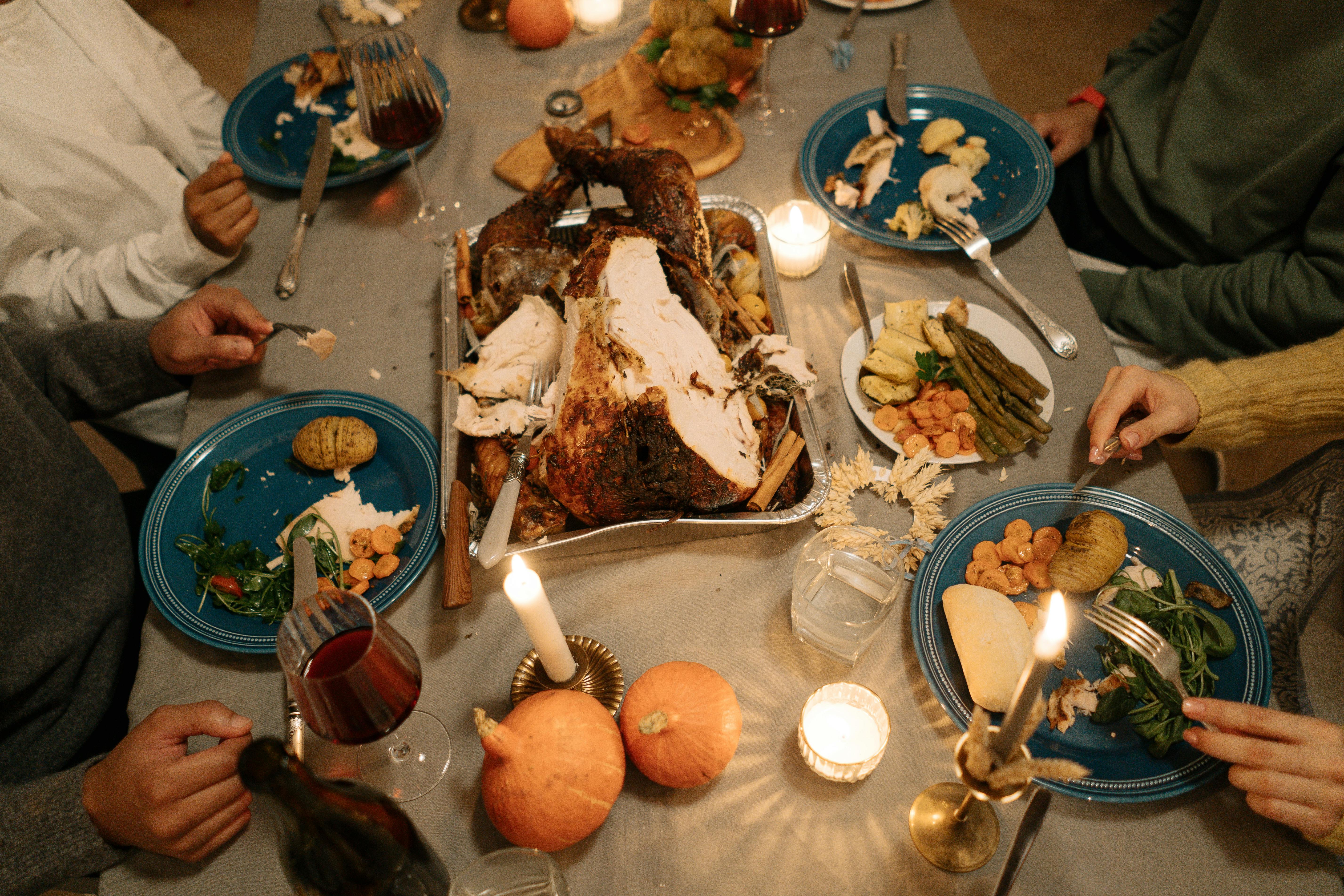Thanksgiving Food Safety Tips
It is not only about cooking the food to the correct temperature, but also how long the food should sit out, and safe storage after the meal is over. Here is more information to have a healthy holiday.
Image credit: Pexels, Cottonbro studio

Thanksgiving and the holiday season is upon us, and with it comes the joys of being around family and friends, decorations, gifts, as well as the wonderful food. This last joy comes with caution. People partaking in everything from turkey to the stuffing to appetizers should be aware of food safety in preparing it, how long it sits out, and storage for leftovers.
According to the US Department of Agriculture (USDA), it is estimated that over 46 million turkeys are consumed on Thanksgiving Day alone. With people rushing around to get the turkey and sides prepared and served, cooking mistakes can be made and guests can fall ill. In fact, the majority of poultry-associated food-borne disease outbreaks in the United States stem from mistakes made when handling and preparing food or inadequate cooking.1
One study reviewed outbreaks that were reported to the United States’ Food-borne Disease Outbreak Surveillance System between 1998 and 2012, and out of 1114 outbreaks, 279 were associated with poultry—accounting for “the highest number of outbreaks, illnesses, and hospitalizations.”1
Turkey and Food Safety Tips
“Raw turkey can have Salmonella, Clostridium perfringens, Campylobacter, and other germs. Whether you're cooking a whole bird or a part of it, such as the breast, you should take special care to prevent food poisoning. The bacteria Clostridium perfringens grows in cooked foods left at room temperature. It is the second most common bacterial cause of food poisoning,” writes the CDC on its site.2
So, in keeping with food safety, here are some tips for keeping everyone healthy. The CDC and USDA offer these turkey tips:
Preparation and cooking the turkey.
According to the CDC, your turkey should be kept in a freezer at a temperature of 0˚F or below, and the federal agency warns people to not leave it in the car or outside in colder climates due to those environments being unpredictable.2
CDC says to allow about 24 hours of thawing for each 4 to 5 pounds of turkey. A turkey thawed in the refrigerator can remain in the refrigerator once it's been thawed for 1 to 2 days before cooking.2
In thinking about the stuffing, the federal agency says the safest way to cook this side is in separate casserole dish outside of the turkey. However, for those that do cook stuffing inside the turkey, they recommend to put the stuffing in the turkey just before cooking.2 With either cooking method, CDC says to use a food thermometer to make sure the stuffing's center reaches 165°F. Bacteria can survive in stuffing that has not reached this temperature. Lastly, if you have cooked the stuffing in the turkey, wait 20 minutes after taking the turkey out of the oven before removing the stuffing. This allows the stuffing to cook a little longer.2
After the turkey has been cooked and storage.
Of course, after everyone has eaten initially, the food can sit out for hours before it is wrapped up and put away in the refrigerator.
The USDA recommends that all perishable foods should not be left out for longer than 2 hours because after that time, food falls into the “Danger Zone,” with temperatures between 40-140ºF, and bacteria can multiply quickly. If that food is then eaten, people could contract food borne illness.3
USDA says it might be best to cut the turkey into smaller slices and refrigerate it along with other perishable items, such as potatoes, gravy and vegetables.3
According to the federal agencies, here are some storage tips for leftovers:
- “Refrigerate leftovers at 40°F or colder within 2 hours of cooking to prevent food poisoning. Refrigerate leftovers that have been exposed to temperatures higher than 90°F, like in a hot car, within 1 hour.
- If you are refrigerating a big cut of meat, such as a turkey or roast, cut it into smaller pieces so they cool quickly. You do not need to wait until food is cool to store it in the refrigerator or freezer.”2
- Leftovers should stay safe in the refrigerator for 4 days.3
If you have questions about Thanksgiving dinner, people can call the USDA Meat and Poultry Hotline at 1-888-674-6854 to talk to a food safety expert. They can also chat live at AskKaren.gov, available from 10 am to 6 pm ET, Monday through Friday, in English and Spanish. If you need help on Thanksgiving Day, the Meat and Poultry Hotline is available from 8 a.m. to 2 p.m. ET.3
